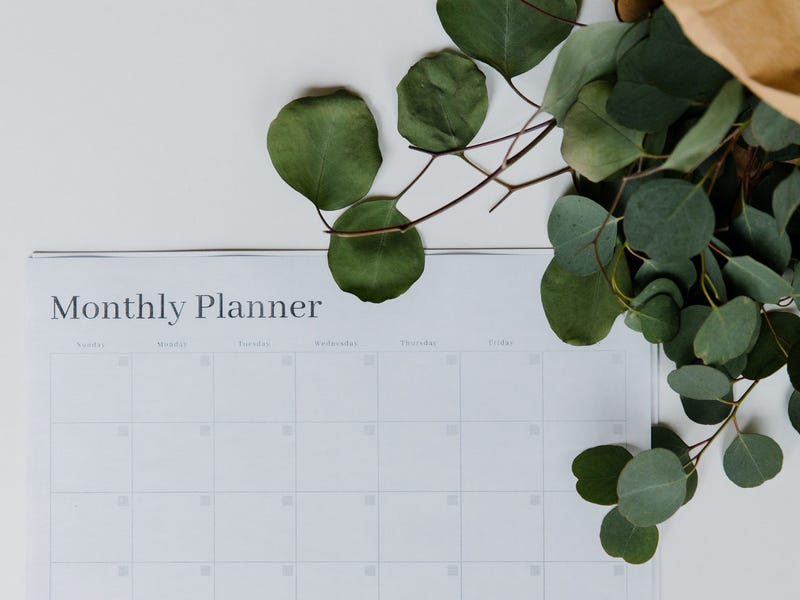It’s a fact. We can’t escape numbers.
If you think about it, they’re essential to our daily life. No matter what industry you work in, numbers are everywhere, and no matter how hard you try, you probably can’t run away from mathematics.
Your age, a phone number, particular calendar date or even money in your bank account - they’re all numbers. Therefore, if you’re learning a new language, learning numbers is one of the first things you will learn about, as is the case with French, one of the most popular languages of the Romance languages.
Learning numbers in French
When we’re in the process of learning a new language, learning numbers can seem like a big task.
So we’ve put together some tips that will help you learn French numbers from 1 to 100 easily. You should find some logical patterns to follow, to help you put them into practice in your daily life.
Remember, the more practice you do, the quicker you’ll absorb them, which should help you progress your French proficiency level much faster than you ever imagined.
French numbers from 1 to 100

Dividing our learning will help us break down one bigger goal of learning French numbers into smaller, more achievable tasks and milestones.
French numbers from 1 to 20
Firstly, lets learn French numbering from 1 to 16 since these numbers are all different from each other - and there will be no repetition. Knowing these numbers will be a great foundation to grasp how numbers in French work. Below, find numbers one to sixteen:
- Un
- Deux
- Trois
- Quatre
- Cinq
- Six
- Sept
- Huit
- Neuf
- Dix
- Onze
- Douze
- Treize
- Quatorze
- Quinze
- Seize
Next, let’s explore 17 to 19. You may start to see some patterns emerging. It is only necessary to first say the ten (dix) and then add the number we need by joining both words with a hyphen:
- Dix-sept (17)
- Dix-huit (18)
- Dix-neuf (19)
- And the 20th is called vingt.
French numbers to 60
From now on, you can go back to the pattern you used with number 17. To make 21, we are going to add the word "et" (and) between both numbers leaving: "vingt-et-un."
Now you know this little trick, and you can focus on learning the number of each ten, that is:
- 30 (trente)
- 40 (quarante)
- 50 (cinquante)
- 60 (soixante)
Then you can begin to combine the numbers step by step, as explained above. Don’t forget that with the first number after the tenth, you must add the "et" (and) - e.g. 31 = trente-et-un.
However, with the rest of the numbers following 31, it won’t be necessary. And that logic repeats for every 10 numbers - for example, 32 is trente-deux, 53 is cinquante-trois, etc.
It’s clear that the numbering tends to be very repetitive in terms of its pattern.
French numbers 70 to 100
Keep in mind that there are always some details or exceptions that we should remember, such as 70, 80 and 90. For these numbers in particular, think about them this way:
- 60 + 10 = 70 (soixante-dix),
- 60 + 11 = 71 (soixante et onze),
- 60 + 15 = 75 (soixante-quinze),
- 60 + 19 = 79 (soixant-dix-neuf)
If you look closely, you can see we’re taking the number sixty and then we add ten, eleven, twelve, etc. As for 80, you should think of:
- 4 times 20 = "quatre-vingt" (80)
- 4 times 20 + 1 = “quatre-vingt-un” (81)
- 4 times 20 + 2 = “quatre-vingt-deux” (82)
- and for 90 remember that there are 4 times 20 plus 10 = "quatre-vingt-dix ”
- Finally, to say 100 in French, say “cent”
Knowing some basic math will help you pickup French numbers, and once you familiarize yourself with these patterns, it’ll become more straightforward for you.
Memorization tricks for French numbers

If you have a little free time, try making a number memory game in French to help you more easily remember the relationship between numbers and how they are written.
For this, you could use bibliographic cards. On each card, write the number with digits with one color, and on another, how it is written in French in a different color. Underneath, you could even include its pronunciation in another color or on another card.
In this way, you’ll have cards with numbers in French from 1 to 10, from 11 to 20, from 21 to 30, etc., and join the pairs or thirds of ten by ten. When you feel more confident, you can mix all the cards and try matching all the numbers from 1 to 100.
This game is a dynamic way of learning. Games are strategies widely implemented around the world in the teaching of foreign languages, helping to develop understanding and create a link between the visual, the auditory and the playful.
French pronunciation is paramount
If you have already started studying French, you may have already realized that there are some basic rules for pronunciation. These rules also apply to French numbers pronunciation, and if you can master them, you can use them as examples when you see more advanced words with similar combinations of letters.
It is important to understand that French is not a phonetic language. This means that when we pronounce words in French, we’re not going to read them in the same way they are written. Let's look at some examples:
- Often, the E isn’t said nor heard, unless the vowel has an acute accent (é)
- The S and X are also generally not said when they are at the end of the word, but remember that there are exceptions. As an example is the word "plus", when we use it in a math equation or when we want to say "more". Here, we pronounce the S - an example of an exception to the rule.
In the case of the X and the numbers in French, we should pronounce it as if it were the letter S:
- 6 = six, pronounced “sis”
- 10 = dix, pronounced “dis”.
The case of R is perhaps one of the best known since its particular pronunciation is one of the characteristic features of this language. The R in French is a guttural consonant, which means that we pronounce it with the back of the throat, and this gives it a somewhat dark and "gnarly" sound.
It’s often difficult to use that part of the throat as we don't use it much at all in English. You may find it easier to think of the R as if it were a G.
Don’t forget the nasal vowels. Those may remind you a little of when you have a cold, and these are very simple to remember. Letter combinations like en, in, un, and an will all sound as if you were saying "an" with a cold. Send the sound towards your nose, you will feel the back of it vibrate. In the case of number 5 (cinq), it’s pronounced and said like "sanc".
The number 2 in French is "deux" (the letter E does not sound and neither does the X, so the pronunciation is simple DU with the U with a small I sound); then 30 is “trente” (the combination of the letters EN will sound like AN as we saw earlier), if we want to say 32 it will be “trente-deux” = trANte-du.
Now, try to think about how the following numbers 33, 34, 40, 69, 84, 98, 100 will sound using the tips we gave you earlier. You can try some useful tricks at when you’re beginning by writing how they actually sound. Remember that you can find recordings of native speakers saying the numbering all over the internet.
Practice makes perfect

In addition to these tips, we recommend that every time you’re going to use a number, try to think about it in French. For example, if you go to the supermarket and you have a list of 20 or 30 different products that you should buy for your pantry, you have many moments in which you can apply your theoretical knowledge:
- Read the prices of the products in your mind in French. Or if you don't mind that people hear you, you can even say them aloud.
- Check the label for calories and nutritional content, you’ll find quite a few figures that you can read in French.
- Make the sum of your purchase in French! For this, remember that these words are key: to add, say "plus"; to subtract "moins"; to multiply, you say “fois” (4 x 3 would be 4 “fois” 3), or you can also say “multiplié par”; and to divide we use "divisé par".
Besides shopping, you can practice French anytime you want to in your daily life:
- Check your phone contacts and practice saying the numbers of your friends in French;
- write down your appointments in French;
- check your bank account and look at the expenses and try saying some of these numbers in French;
- learn how to say the French days of the week and the months of the year in French and practice saying and writing calendar dates;
- when getting up, before going to bed or simply looking at the clock, don’t miss the opportunity to use the language.
It might seem excessive, but in reality, using the French language in real-life context will help you better absorb and retain the knowledge.
How to learn French faster
A common question we get from students is how they can learn French faster. Well, have you heard the phrase "don’t translate, think in the language you are learning"? There’s definitely plenty of truth to it. The moment you start thinking in French, you’ll progress faster - you’ll begin using structures, words, and numbers almost automatically, as you do with your mother tongue.
Ultimately, that's what the goal is - to sound like confident, fluent speakers. And with practice, that’s exactly what you can achieve.



